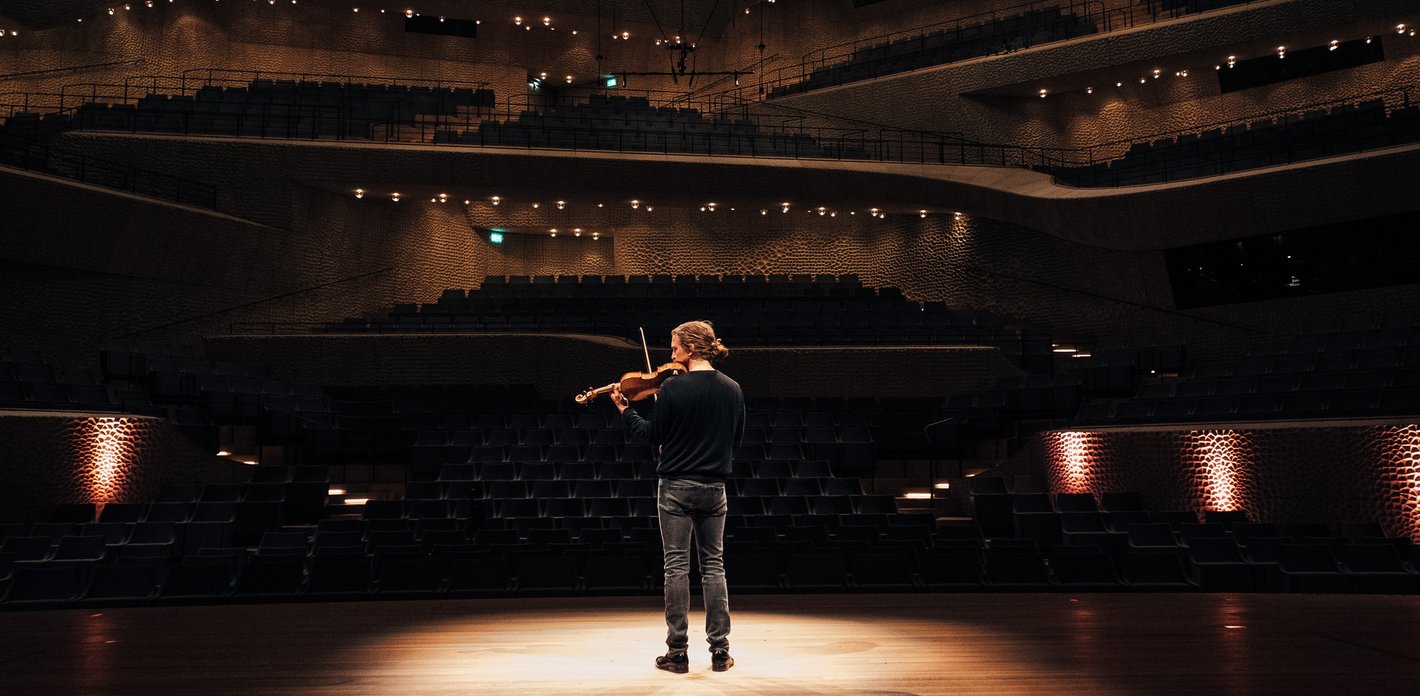The »Elphi at Home« series was born in spring 2020. When the concert halls were closed to the public, the Elbphilharmonie invited artists to stream concerts live from the Elbphilharmonie.
The Artist
Hamburg native Christian Tetzlaff has been one of the classical world's most sought-after violinists and most interesting musicians for some years now. He is equally at home in the classical and Romantic repertoire and with 20th century music, and has set standards with his readings of the great violin concertos. He performs in all the major international music centres as both a soloist and a chamber musician. Tetzlaff has already made three CD recordings of Bach's solo sonatas and partitas, from which he plays the second partita today; the latest of these recordings was released in 2017 and won the German Record Critics' Annual Award.
The Programme
Johann Sebastian Bach (1685–1750)
Partita Nr. 2 d-Moll BWV 1004 (um 1720)
Eugène Ysaÿe (1858–1931)
Sonate g-Moll op. 27/1 (1923)
About the Music
J. S. Bach: Partita Nr. 2 in D minor
Bach's six Sonatas and Partitas for Solo Violin are nothing short of sacrosanct: to this day, they are the most important and impressive foundation stone of the violin repertoire. They exploit to the utmost the tonal and technical potential of the instrument as well as the range usual at the time, the violin's virtuosity and its ability to play more than one part. The second of the three partitas, which Christian Tetzlaff plays here, consists of four dance movements (Allemande, Courante, Sarabande and Gigue – the traditional sequence of the French suite) and a closing movement added by Bach: a »ciaccona«. Chaconne is a term used by musicologists to describe a set of variations on a constantly repeated harmonic scheme – precisely comparable to an excessive blues solo.
With his majestic Chaconne in D minor, Bach composed what is probably the most elaborate example of its type. It not only represents the irresistible centre of gravity of all the six Sonatas and Partitas; it is also one of the most breathtaking pieces ever composed for a solo instrument. Bach came up with no fewer than 64 variations on the chord sequence that he presents in the first few bars. It's not long before passing notes connect the chords, and the bass line is affected as well. From the harmonies Bach derives a wide variety of of melodic lines that cross one another polyphonically, overlapping and playing in several parts. The music work itself up in arpeggios towards a climax, finally discharging in an outbreak of virtuoso, rapid scale passages. The Chaconne is one of the most frequently-arranged Bach works, with the best-known piano transcription coming from the pen of Ferruccio Busoni.
»Die Chaconne ist eines der wunderbarsten, unbegreiflichsten Musikstücke. Auf einem einzigen Notensystem, für ein kleines Instrument, schreibt der Mann eine ganze Welt von tiefsten Gedanken und gewaltigsten Empfindungen.«
Johannes Brahms

Eugène Ysaÿe: Sonata in G minor
Eugène Ysaÿe (1858-1931) was one of the greatest violin virtuosi of his time. Wherever he appeared, he elicited thunderous applause from the audience, and composers like Debussy and Saint-Saëns dedicated important works to him. And Ysaÿe was also a composer in his own right: in 1923, when his own heyday as a soloist was behind him, he heard a concert given by his colleague Joseph Szigeti featuring Bach's Solo Sonatas and Partitas, and this inspired him to write his own collection of violin sonatas.
He dedicated each of the six sonatas, conceived as a contemporary pendant to Bach, to a different violinist he was friends with, whose style and personality he portrayed in each case. The first sonata, a homage to the same Szigeti whse playing inspired Ysaÿe's sonatas, is set like Bach's first sonata in G minor, and recalls the great Baroque composer in other respects as well. But it is also music of its time, going beyond harmonic boundaries and riddled with technical innovations and other challenges. A piece for virtuosi, then, and thus perfect for an artist like Christian Tetzlaff.
Text: François Kremer / Clemens Matuschek (Stand: 30.4.2020)



